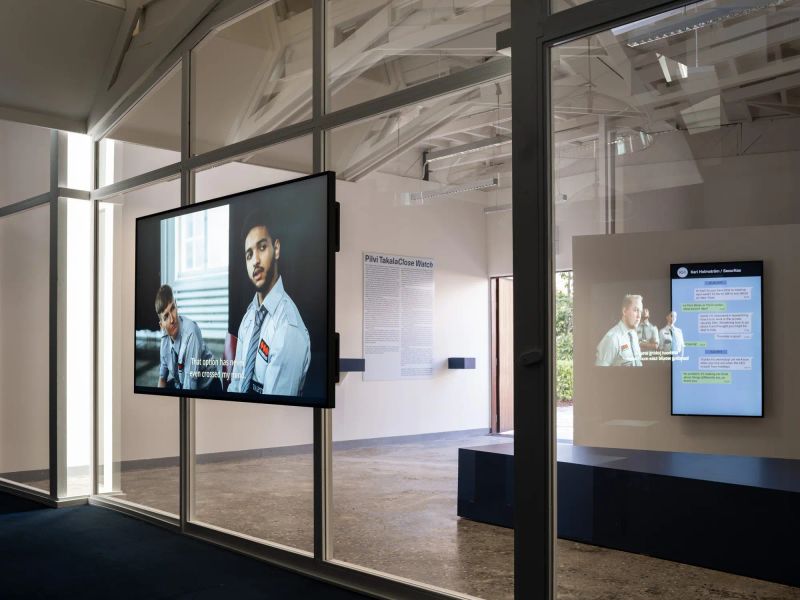
Who watches whom? Ruminations on power, gaze, and field through Pilvi Takala’s Close Watch
In NO NIIN, issue 12, 2022
Close Watch exhibited at the National Finnish Pavilion at Venice Biennale, 2022, is a multimedia installation that, at its core, utilises the artist themself as an embodied intervention within a focused area of artistic research and apparent critique. In the context of this work presented as an exhibition at the national pavilion and its implications of somehow representing Finnish Art, this text seeks to question whether issues pertaining to embodiment and social intervention – and by extension, research conducted and artistic practice developed through it – can ever be free of the power relations implicit in the political, identity-driven understanding of society today.
Can the ability of the artist (as a white, middle / upper class body) to secure themselves a job and receive training within a security company, in order to carry out their process of artistic research be perceived as anything other than a striking signalling and affliction of privilege? Even if we ignore the fact that Takala occupied a position that likely could have allowed another candidate (in greater need) to potentially earn a living wage (and obtain funds to secure a year’s worth of living permission from MIGRI), it is impossible to deny that there exists some kind of perversion at the core of this situation: on one hand, an artist is structurally enabled by a system to enact a choice, to legitimately utilise a work opportunity as a means to conduct artistic research.
In contrast, hundreds if not thousands of art and cultural workers, competent beings who otherwise excel at what they do, are forced to devalue, let go of, or set aside their expertise, nevermind their desires and goals, to perform labour and work outside of their primary vocation and field of work. While it is difficult to find jobs to supplement an art and cultural practice, the field is saturated with “unpaid internships”1 that expect a bursting roster of ‘useful’ skills, low wages in their field of interest, language barriers, and wage disparities between Finnish and non-Finnish workers. Although “foreign-born unemployment is almost four times higher than the overall unemployment rate [and] immigrants earn, on average, 25% less2 than native-born Finns”3, a majority of non-Finnish art students who face these structural inequalities, permanently return to their home countries4 after being unable to secure basic living conditions for themselves. Those who believe that staying in precarious conditions is a better option than returning5, or those who are tenacious enough to stick with the task of creating a diverse art field in Finland, are almost always working multiple jobs, performing administrative tasks for their practice, and navigating a system6 that is designed to be more closed to outsiders than open.
Read the full article online at NO NIIN magazine website here